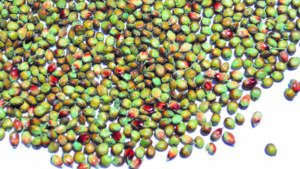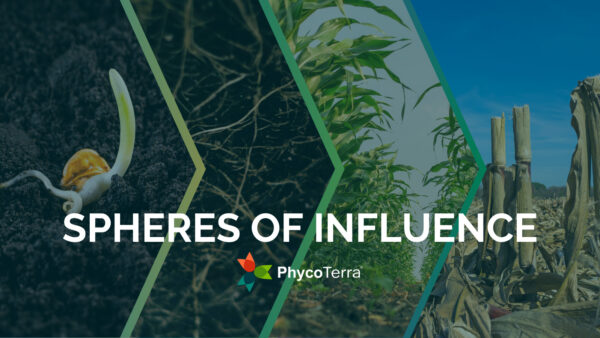As U.S. sorghum growers voice concerns about the lack of weed control options, the Sorghum Checkoff has funded three projects to help provide answers.
Unlike corn and soybeans, sorghum has not yet been privy to the development of herbicide-resistant technology and the use of glyphosate. That’s not to say that weeds aren’t a problem for sorghum growers, they are. Weeds in sorghum fields can result in up to a 60 percent to 70 percent yield loss if not controlled, according to research from Kansas State University.
“There’s economic value in controlling them if you know there’s enough competing with the crop,” says Anita Dille, a K-State University professor of weed ecology.
However, controlling grass weeds in sorghum is a unique challenge because sorghum is a grass, explains Mithila Jugulam, a K-State University associate professor in weed science. Any herbicide used on grass weeds, such as johnsongrass, barnyard-grass and shattercane, could also affect sorghum.
While sorghum does have pre-emergence herbicides available, these herbicides need moisture for activation and are only active for a short period. Weeds can still grow throughout the cropping season.
Controlling grass weeds is a challenge that sorghum growers struggle with year in and year out. That’s why the Sorghum Checkoff awarded three scientists funding to pursue research that could help in finding a solution.
The Quest

One of the scientists who received funding is Todd Gaines, a Colorado State University assistant professor of weed science. The checkoff awarded his research program $150,000 over the course of five years to develop new herbicide resistant traits through mutagenesis.
“Mutations are the basis of genetic variation,” Gaines says. “In a sense, we speed up the process and make new variations.”
The project began in 2016 with the first round of mutagenesis. The following year, the researchers sprayed plants in the field at research centers in Fort Collins and Rocky Ford but were unable to find a resistant plant.
In 2018, they used a different mutagenesis method and are in the process of growing the treated seed containing that trait. Next summer, herbicide will again be applied, and by the end of the project, the researchers will know if they’ve found a mutation that provides resistance to herbicides used on grasses.
Gaines says that they already know a great deal about the way resistance to herbicides works. Based on that knowledge, he says there are seven different places in one sorghum gene where they could find a mutation that would let sorghum resist grass herbicides.
“We’re looking for the one mutation in millions that would cause resistance,” Gaines says.
Researchers plant the treated seed in test plots, spray the resulting plants with ACCase inhibitors, such as quizalofop and clethodim, which control grasses and not broadleaf plants, and see which ones survive. From there, the research team can tell which gene or mutation enabled the plant’s survival.
“If and when we discover the resistance trait, we’ll start working with plant breeders to do inbred lines, so they can work with varieties,” Gaines shares. “We’ll also work with an herbicide company to develop a new herbicide label.”
The new variety that is developed will need a herbicide label and EPA’s approval.
Gaines anticipates that the process from beginning to end (from seed treatment and planting for experiments to an herbicide being used in the field) will take 10 to 12 years.
The wait could be worth it for producers.
“This would be an additional management tool for a difficult problem,” Gaines says. “It doesn’t solve everything, but anything we can do to diversify weed management is good. It could make growing sorghum an option in fields where it isn’t right now.”
Research partners include Colorado Sorghum; Michael Bartolo at Colorado State Arkansas Valley Research Center in Rocky Ford; Phil Westra, Colorado State Extension weed specialist; and Olivia Todd, doctoral student.
Testing Germplasm
To the east, two K-State scientists were awarded grants for separate research projects: one for identifying germplasm with herbicide tolerance and the other for understanding ecology and competition.
When Jugulam first began her career at K-State as a weed physiologist, sorghum growers were expressing their concerns about the lack of herbicide options available. She began to brainstorm solutions with Curtis Thompson, a retired K-State Extension weed specialist.
The checkoff granted Jugulam’s research team $30,000 annually for three years to evaluate sorghum germplasm and identify herbicide-tolerant traits. The project began in 2015 when researchers collected 1,000 different sorghum genotypes from around the world.

Jugulam explains: “We thought if we screen a large collection of sorghum genotypes, we could identify lines that are naturally tolerant.”
Seed samples were grown in Petri dishes containing various herbicide concentrations and tested in the laboratory. The researchers then observed whether or not plants grew from these media and examined any resulting physical appearance and, if any, damage from the herbicide.
From those experiments, they found 30-40 genotypes that exhibited tolerance to the herbicide. These plants then were tested in the greenhouse, where the genotypes were narrowed down to three or four that showed elevated herbicide tolerance. For comparison purposes, a sensitive genotype and a commercial check also were used in the experiment.
The genotypes with high herbicide tolerance were tested for two years in the field. The results were consistent with what was found in the lab and greenhouse. The primary data showed that in the tolerant lines, herbicide degrades rapidly, similar to how the same herbicides work in corn.
The research team also looked at yield to see if there would be any loss.
“Compared to nontreated, the treated herbicide-tolerant genotypes did not have any yield penalty,” Jugulam says.
She points out that the genotypes with high herbicide tolerance are not suitable for commercial production as they do not possess desirable agronomic traits. The next step is to understand why these lines are tolerant to herbicide and how the trait is inherited.
Jugulam says the ultimate goal is to transfer herbicide-tolerant traits from the tolerant genotypes into an agronomically suitable background. They would then perform experiments to look at the feasibility of crossing tolerant genotypes with agronomically suitable ones. Jugulam will work with a plant breeder to transfer the herbicide-tolerant traits into an elite background, which includes genetic lines known to perform well with high yield, short stature, no lodging and other advantages.
Today, researchers on the project are assessing the physiological and molecular mechanisms that are responsible for herbicide tolerance in sorghum. Jugulam estimates that, overall, six to eight years of work is needed to develop the final product.
In the future, Jugulam hopes to identify markers and genes responsible for herbicide tolerance. She also looks to optimize a breeding program to transfer the trait into a desirable background.
Research partners include the Kansas Grain Sorghum Commission; Thompson; P. V. V. Prasad, distinguished professor in crop physiology; Tesfaye Tesso, professor in sorghum breeding and genetics; Sanzhen Liu, assistant professor in genomics and bioinformatics; and Balaji Aravindhan Pandian, doctoral student.
Ecology and Management
K-State’s Anita Dille also received a Sorghum Checkoff grant in the amount of $160,000. Dille’s research hones in on the ecology of grass weeds found in grain sorghum.
Prior to the study, there was not a much ecological knowledge about grass weeds (when they emerge and what species need to be controlled) in sorghum.

From a management perspective, researchers know that herbicides control weeds when applied to weeds up to certain sizes. What they didn’t know was when the grass weeds would reach the critical stages and how those stages related to the life cycle of sorghum. This information would then inform them as to when an herbicide could be applied to a sorghum crop.
There were two pieces to this research project: when emergence would occur and what species would appear.
Dille explains they first had to examine when grasses emerged and how quickly the plants surfaced. This helps them understand what grasses compete with the sorghum crop and possibly cause loss during the critical period of weed control.
If weeds aren’t controlled during the first two or three weeks of a crop’s life when the crop needs to be weed free, there’s a chance of losing more than 5 percent of the final yield, Dille explains. During this time, growers determine whether or not there are enough weeds present to manage.
The second piece was determining which species would appear. Dille worked with Wes Everman, a North Carolina State University associate professor in small grain and soybean weed science, to plant sorghum varieties that were resistant to ALS herbicides alongside six different grass weed species in their respective states. Large crabgrass, barnyard-grass, foxtail species and shattercane were some of the species planted at a rate of 100 plants per square meter.
The grass weeds had various emergence patterns, with some emerging first and others later.
“You don’t have all six of the grass species in a field at one time,” Dille says. “Usually, the field has developed their own weed community ‚Äî all crabgrass, all foxtail. It’s interesting to see the different grasses that show up.”
Designed as an 18-month research project spanning two crop years gave researchers the chance to see diversity in the field. Analysis has since concluded, and the researchers are pulling together the final pieces to disseminate their findings.
The information discovered in this study will help sorghum producers know when to scout and which weeds to target.
Dille adds that there has been an increased interest in sorghum management due to new genetics that could give growers more opportunities to manage weeds, climate cycles, less water availability, and the desire to match the crop to the environment.
She says this research project could help producers look at the whole agronomic system, such as creating competition with weeds through crop production practices, all while still being economical.
“These little pieces can be put together to design better management systems,” Dille says. “We can take what they found and put it into a bigger package of integrated management.”
Moving forward, Dille says future research needs to analyze the weed threshold and how many individual grass plants cause what level of yield loss. Another piece to examine, she says, is the impact of other cultural practices, such as row spacing and seeding rates, on grass weeds.
Partners in this project included Pioneer and Advanta, North Carolina State University Research and K-State Research and Extension.













